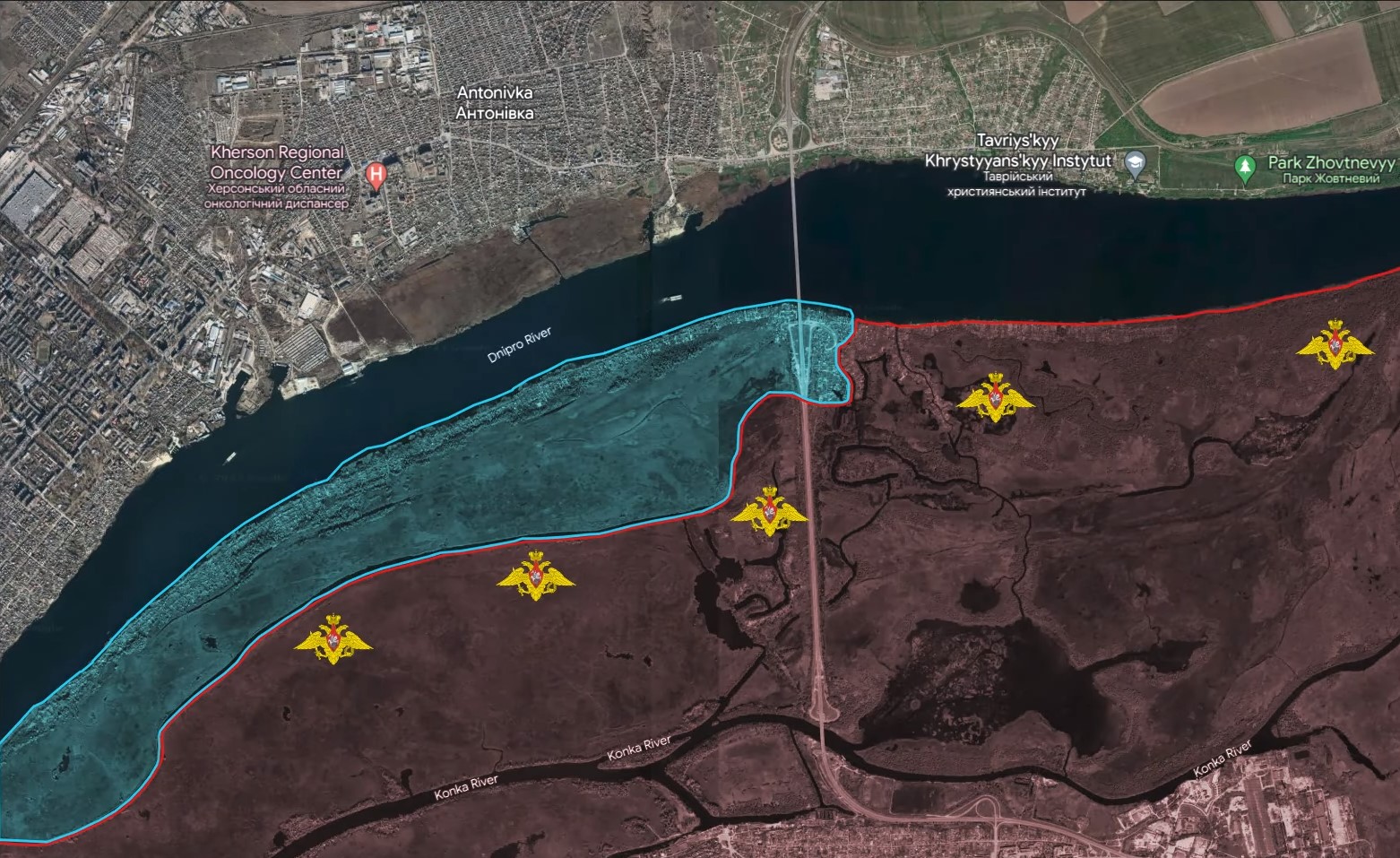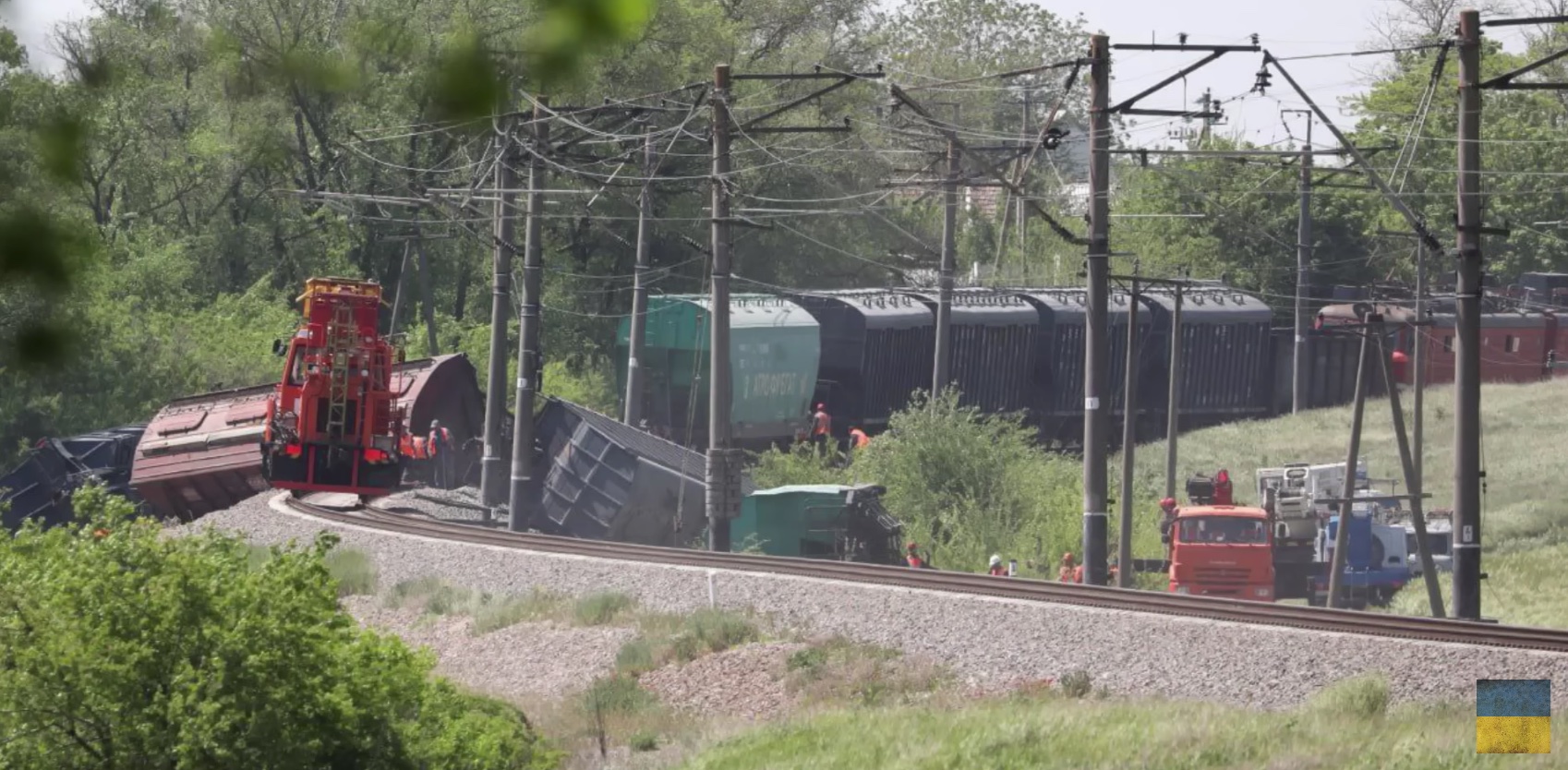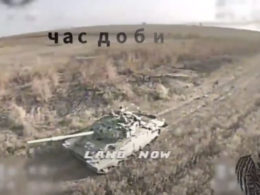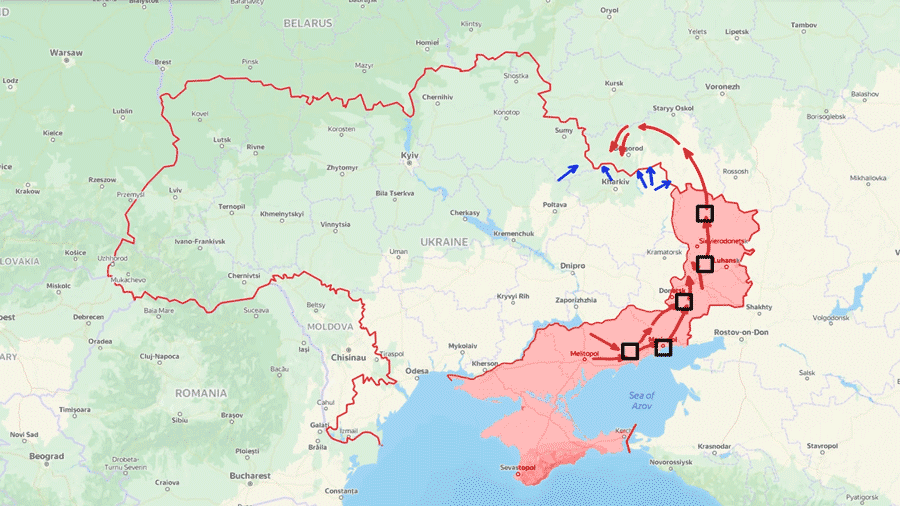Day 489: June 27.
Today the most important news comes from the Kherson Oblast in southern Ukraine.
Ukrainians continue conducting amphibious operations on the Dnipro River to develop a bridgehead on the other side of the river, while the Russian defense is still weak in the aftermath of the destruction of many Russian fortifications due to flooding. Geolocated footage shows that day after day, Ukrainians are successfully reinforcing their assault group. Yesterday Russian sources reported up to 50 Ukrainian soldiers in the area. According to Russian military bloggers, this number has already increased to 100 troops.
At first, Russians tried to use their aviation to bomb the residential area, especially the Antonivskyy Bridge, which Ukrainians use as their main fortification and shelter. However, the usage of aviation proved to be highly problematic.
First, the munitions are not precise, requiring more airstrikes or getting closer to the contact line. And this is impossible because, secondly, Russian sources reported that Ukrainians had redeployed multiple S-300 air defense systems to the towns and villages near their bridgehead. Some Russian fighters also complained that they could not even use drones because they lost connection halfway toward the bridge due to the extensive use of electronic warfare systems by the Ukrainians.
That is why if Russians wanted to eliminate the enemy bridgehead, they needed to conduct direct ground assaults. The first Russian assault group tried to use armored fighting vehicles to deliver the assault units directly to the Ukrainian positions. This did not work very well because Ukrainians had mined the approach to the bridge, so the mine immobilized the vehicle, and Russians immediately ran away in all possible directions.
Zelenskyy visits front lines, claims Ukrainian advance in several directions
Russians considered it and drove to the first houses close to the bridge instead of a frontal assault on the bridge itself, where Ukrainian troops established their positions. Russian forces used three armored personnel carriers to deliver three assault squads, 30 soldiers in total.
Ukrainian reconnaissance drone operators spotted the movement of Russian troops and immediately communicated their coordinates to the Ukrainian artillery crews. Shortly, the artillery hit the area of the deployment of the Russian troops, inflicting significant losses and ending the planned assault. The remaining Russian troops dissipated throughout the area and requested support and evacuation.
Unfortunately for Russians, the coordination and communication between the assault units were nonexistent in the aftermath of the artillery strike. So, when the first Russian group that assumed positions in the forest noticed movement in the residential area, they assumed this was a Ukrainian counterattack and opened fire at the second group of Russians in the houses.
When the support arrived, the Russian armored fighting vehicle advanced while simultaneously firing precisely at the houses with the Russian airborne unit. The armored fighting vehicle picked up several wounded soldiers from the other group and drove away.
Judging by the footage, the machine gun fired indiscriminately at all the houses along the road. Given the caliber of the gun, the brick walls of the houses provided as much protection as paper, so Russian forces who successfully got a toehold in the residential area likely suffered heavy losses due to the friendly fire.
Overall, Russian forces proved incapable of controlling the islands, where Ukrainian troops reinforced their assault group. Even though the Russians had a paved road leading right to the residential area, the Ukrainians took it under total fire control, not allowing the Russian forces to deliver supplies or rotate troops.
Russian sources reported that small high-speed boats proved highly effective for controlling the river because they were extremely mobile and an impossible target for the Russian artillery. The only real danger for the Ukrainian boat crews is Russian troops near the river, on the shore.
With that in mind, we can see that by pushing Russians from these small islands and residential areas, Ukrainians gradually gain complete freedom of movement on the river, even without controlling the other bank. Russian analysts are warning that once Ukrainian forces push the Russians to the mainland, the Ukrainians will start looking for a weak spot. Given the length of the front line, the probability that the Ukrainians will find such a weak spot is extremely high.
In our daily frontline report, we pair up with the military blogger Reporting from Ukraine to keep you informed about what’s happening on the battlefield in the Russo-Ukrainian war.
Related:
- Frontline report: Ukraine takes tactical heights in Rivnopil with minimal engagement
- Missile strike on Chonhar bridge causes delays in Russian military logistics - British Intel
- Frontline report: Ukrainian forces hold ground, disrupt Russian logistics in southern theater
- US announces additional security assistance for Ukraine: Bradleys, Strykers, ammo for artillery, HIMARS, Patriot
- Ukraine makes incremental gains near Bakhmut for fourth consecutive day - Defense Ministry
- Freight train derailed after railway blast in occupied Crimea





